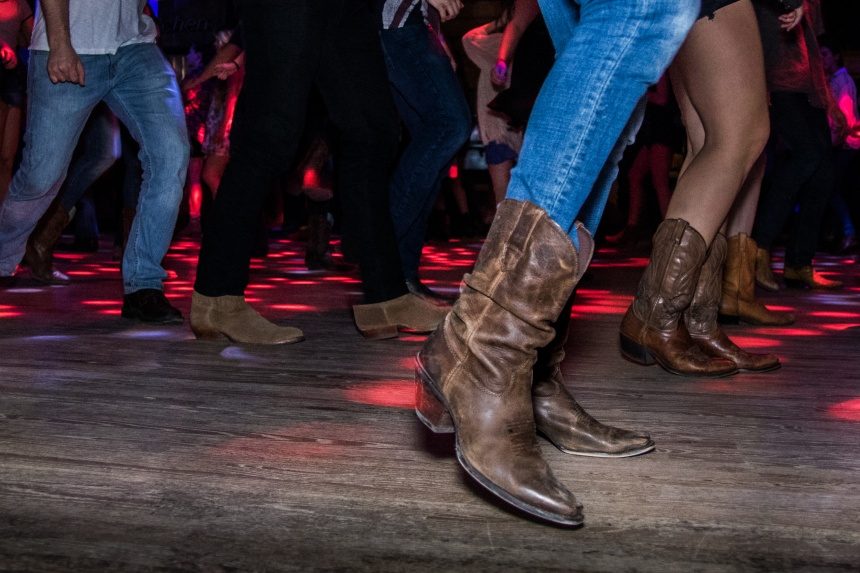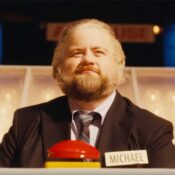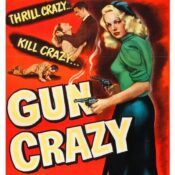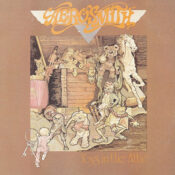No matter how you look at the decade, the 1970s were a musical battleground. New and rising genres like disco, punk, funk, and hip-hop arrived as significant acts from the previous decade broke up (The Beatles), faded, or died. The Southern Rock and singer-songwriter movements impacted the charts, as did more socially conscious soul and R&B. In the country music arena, a struggle ensued between a shiny, rhinestone-covered version of the sound and artists who wanted to push for gritand authenticity. By 1980, the clash in country hit a flashpoint in an unlikely place, the John Travolta film Urban Cowboy, which was released 40 years ago this week.
Dolly Parton’s “Here You Come Again” was a #1 pop song in 1977 (Uploaded to YouTube by Dolly Parton)
A fine point about the divergences in country through the 1970s was made in, wouldn’t you know it, The Saturday Evening Post. In a 1975 article, “Nashville – Where It Started,” Paul Hemphill said, “Country music isn’t really country anymore; it is a hybrid of nearly every form of popular music in America.” Hemphill meant the genre wasn’t just cowboy songs or honky tonk or rockabilly; it was a thing that combined all sensibilities, including folk and pop. Song of the biggest stars at the time, like John Denver or Olivia Newton-John, either started in other genres or integrated other styles into the country approach. Denver even won the Country Music Association’s award for Country Music Entertainer of the Year in 1975. Established country artists like Dolly Parton began to regularly score huge hits on the pop charts.
“Are You Sure Hank Done It This Way” by Waylon Jennings (Uploaded to YouTube by Waylon Jennings)
That same year, Waylon Jennings recorded “Are You Sure Hank Done It This Way?” which suggested that a new approach in both style and content was needed in the form. Jennings and other artists like his wife, Jessi Colter, Willie Nelson, Johnny Cash, and others, leaned on a rougher style that became known as Outlaw. Many of those artists chucked the shiny blazers and sparkly suits that had been en vogue for the decade in favor of jeans and leather vests or jackets.
The trailer for Urban Cowboy (Uploaded to YouTube by YouTube Movies / Paramount)
It was against this backdrop that Urban Cowboy came into being. The film drew inspiration from the Esquire article “Urban Cowboy” by Aaron Latham; Latham’s piece centered on a romance at Gilley’s, which was a massive honky tonk club in Pasadena, Texas. Latham and director James Bridges adapted the story into a screenplay with John Travolta and Debra Winger as the leads. It was little wonder that Travolta had an interest in the part; his massive 1977 hit Saturday Night Fever was also based on a magazine piece. Also like Fever, and Travolta’s 1978 hit, Grease, the part would allow him to show his dancing ability against the backdrop of a strong soundtrack (Travolta’s representation had previously suggested he take a cut of the soundtracks for Fever and Grease, a move that paid off to the tune of millions). While the film wasn’t as huge as Fever or Grease, it was a sizeable hit in terms of not just box office, but also fashion and music.
The soundtrack for Urban Cowboy leaned heavily on pop-flavored country and generated five Top 10 country singles (“Love the World Away” by Kenny Rogers; “Look What You’ve Done to Me” by Boz Scaggs; “Stand by Me” by Mickey Gilley; “Lookin’ for Love” by Johnny Lee; “Could I Have This Dance?” by Anne Murray); the latter three all went to #1, and all five crossed over to the Pop Chart. Those songs, along with other hits like Dolly Parton’s title tune from her own 1980 film, 9 to 5, caused a major surge in the popularity of the lighter side of country.
Sylvia performing “Nobody” (Uploaded to YouTube by Sylvia – Topic / Sony Music Entertainment)
However, country traditionalists weren’t exactly thrilled. A definite schism arose in the genre between the rougher outlaw artists and related subgenres, and the more pop-oriented singers and groups. On a commercial level, the pop style was in ascendance, with artists like Rogers and Parton consistently notching hits on both charts. In the wake of the success of Urban Cowboy, new fans of the genre came in concurrent to a spike in the number of stations moving to a country format (some were new, while a few of these had abandoned disco and the 1970s staple AM easy listening formats). TV helped both sides, with the continued success of Hee Haw in syndication showcasing acts from all segments of the country spectrum. Following the lead of 1981’s launch of MTV, the 1983 debut of The Nashville Network gave the genre its own cable platform. Like Hee Haw, the channel featured a variety of artists; however, it did tend to emphasize pop-oriented and video-ready acts like Sylvia, whose “Nobody” went to #15 on the pop charts in 1982.
Of course, no subgenre holds sway forever. Pop crossovers started dropping in the mid-’80s as both the pervasiveness and increased diversity on MTV allowed superstars like Michael Jackson, Madonna, Prince, Bruce Springsteen, and others to dominate the charts, while also allowing booming genres like metal and hip-hop to enjoy crossover success. Country retrenched in the mid-1980s as neotraditionalists like Clint Black, Dwight Yoakam, The Judds, Reba McEntire, and George Strait took over for the rest of the decade.
The Highwomen perform “Redesigning Women.” (Uploaded to YouTube by The Howard Stern Show)
Today, country is as it’s always been: an amalgam of many genres and subgenres. It experienced a huge boom in the early ’90s when SoundScan dramatically changed how sales were counted, and enormous acts like Garth Brooks and Shania Twain were as big as any stars on the planet. Though country still offers the occasional crossover breakout, like Taylor Swift, it’s steady and thriving. Some likened the recent years of male-heavy “bro country” to the Urban Cowboy years, but acts like Brandi Carlile, Maren Morris, the supergroup The Highwomen (of which Carlile and Morris are members), Kacey Musgraves, and Kelsea Ballerini, among others, have carved out a bigger niche for female artists in the last few years. The lesson seems to be that no matter how far you stretch a form, it will at some point always snap back to the essentials. Or, to put it another way, you can put country on the pop charts, but it won’t forget where it came from.
Featured image: ThoseLittleWings / Shutterstock
Become a Saturday Evening Post member and enjoy unlimited access. Subscribe now




Comments
Another really good feature on my favorite topic, music! At the time I really wasn’t aware of the splits between the musicians and the fans regarding country music, but was that it was a music genre I really started listening to quite a bit more. Waylon Jennings (love this ‘Hank’ song link) Charlie Daniels, Dolly Parton, Johnny Cash, Crystal Gayle and others.
Bob Seger and George Thorogood were incredible rockers, but seemed to have had ties to country nonetheless. Actually this was true with the Eagles and their closest ‘country rock’ competitor, The Doobie Brothers. ‘Rockin Down the Highway’ (’72) is a great example for the latter. They basically ‘died’ (for me) once Tom Johnston had to leave due to illness. The group from ’76 on retained the name, but that was it. The Michael McDonald rhythm ‘n blues sound and songs turned me off. It was about as bad as Foreigner morphing into Journey 8 years later.
And yet, the group that had to take the most crap for one album (Kilroy Was Here in ’83) because of one song was Styx! 2019 (at the Saban in BH) was my 9th time seeing them in concert since ’77. Even last year when the first 6 notes of ‘Mr. Roboto’ started, the fans go crazy clapping OR leave for its duration. They usually don’t perform it over the past 36 years. ‘Babe’ is MY cue to get a Sprite or get rid of the last one; whichever. Just as long as I don’t miss any notes of ‘Miss America’!
One of my favorite country songs EVER is ‘Hot Dog’ by…. Led Zeppelin! I say check it out, but no one HAS to. The best thing about ‘Urban Cowboy’ was the soundtrack. I may re-order it on Amazon. In the ’80s it was primarily fun pop and New Wave I loved best, after ELO; “my Beatles.” Such a Disneyland of great music. Blondie, The Cars, Loverboy, Pet Sop Boys, Animotion, Berlin, Sheena Easton, Peter Gabriel, Depeche Mode just to name a few. Falco alone put out such fantastic amount of music and videos it was unbelievable. I even liked it when he did rap, which I don’t care for otherwise.
Who else could have inspired me to re-create ‘Amadeus’ for Halloween at work in ’85 in a tuxedo, lip-synching in German? No one! As far as the Chippendale’s guy (shirtless only) in ’86, the girls in my unit made me do it. No #metoo movement (thank goodness!) as I was being groped. There’s no innocent fun like that in life anymore, but no cigarette smoke either!
I LOVE The Highwomen, and this 2019 hit, and would like to see them in concert if and when that might be possible. I think I might have that big old ’75 Post in one of my storage boxes on Nashville. I’ll check it out in the archives per the situation. It might have been the issue with the model on the cover, or the kids at the beach getting a drink. 2 in 9 chance I’m right. My kind of odds.